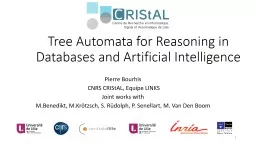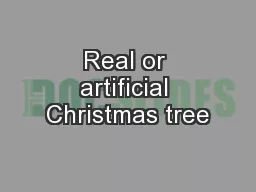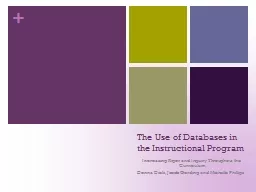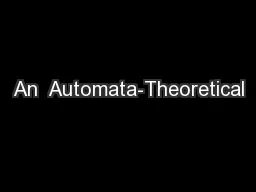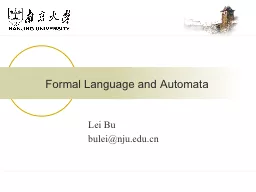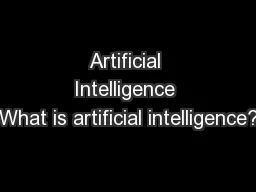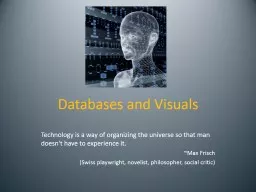PPT-Tree Automata for Reasoning in Databases and Artificial Int
Author : tawny-fly | Published Date : 2017-10-20
Pierre Bourhis CNRS CRIStAL Equipe LINKS Joint works with MBenedikt MKrötzsch S Rudolph P Senellart M Van Den Boom 1 Querying a database Database a labelled
Presentation Embed Code
Download Presentation
Download Presentation The PPT/PDF document "Tree Automata for Reasoning in Databases..." is the property of its rightful owner. Permission is granted to download and print the materials on this website for personal, non-commercial use only, and to display it on your personal computer provided you do not modify the materials and that you retain all copyright notices contained in the materials. By downloading content from our website, you accept the terms of this agreement.
Tree Automata for Reasoning in Databases and Artificial Int: Transcript
Download Rules Of Document
"Tree Automata for Reasoning in Databases and Artificial Int"The content belongs to its owner. You may download and print it for personal use, without modification, and keep all copyright notices. By downloading, you agree to these terms.
Related Documents

